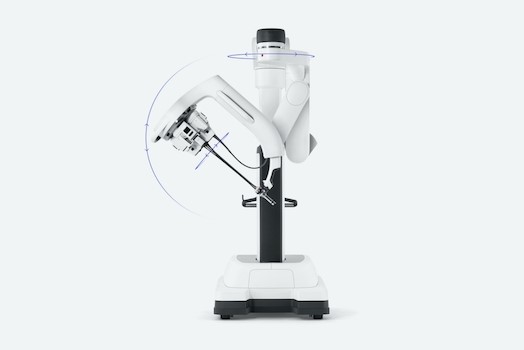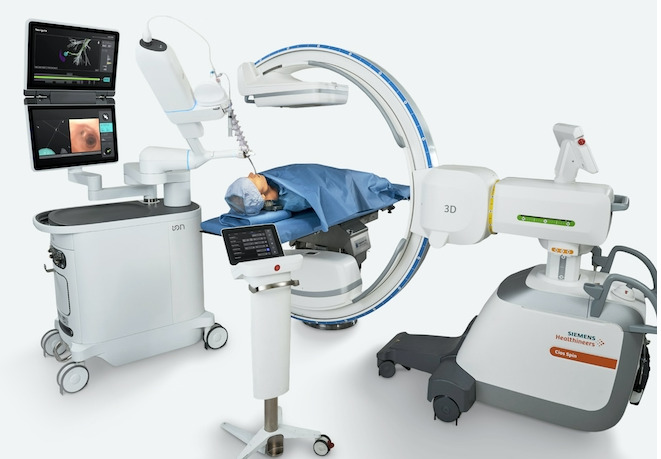Robotic-Assisted Surgery at Hoag
1 Hoag Dr, Newport Beach, CA 92663
(949) 764-4624
- About
- Benefits for Patients
- Benefits for Surgeons
At Hoag, robotic-assisted surgery is becoming the standard of care for many procedures in a range of treatment areas at Hoag, including cancer, women’s, cardiovascular, thoracic and general surgery.

National Leader in Robotic Surgery

da Vinci® SP1 Surgical System

da Vinci® Xi Surgical System

Ion Robotic-Assisted Bronchoscopy

Robotics Center of Excellence

Your care starts here
1
Find the right provider
Get care from medical providers that fit your needs in a location near you.
Find a provider2
3
Get in touch
Didn’t see what you’re looking for? Reach out and we’ll make sure you get what you need.
Contact usBenefits for Patients
Minimally invasive procedures: Robotic surgery enables surgeons to perform minimally invasive procedures with smaller incisions, resulting in less trauma to the body, reduced pain and quicker recovery times for patients.
Enhanced precision and accuracy: Robotic systems provide surgeons with increased precision and accuracy during procedures, leading to improved surgical outcomes and reduced risk of complications.
Reduced blood loss: Robotic instruments often include cauterization capabilities, minimizing blood loss during surgery and reducing the need for blood transfusions.
Shorter hospital stays: Robotic-assisted surgeries often result in shorter hospital stays for patients due to the minimally invasive nature of the procedures and faster recovery times.
Faster recovery: Robotic surgery can lead to faster recovery times compared to traditional open surgeries, allowing patients to return to their normal activities more quickly.
Reduced scarring: Smaller incisions used in robotic surgery result in smaller scars, which are less noticeable and can improve the cosmetic appearance of the surgical site.
Lower risk of infection: Minimally invasive robotic procedures reduce the exposure of internal organs to external contaminants, leading to a lower risk of infection.
Decreased pain and discomfort: Robotic surgery causes less tissue trauma, resulting in reduced post-operative pain and discomfort for patients.
Improved quality of life: Robotic surgery can improve the overall quality of life for patients by providing effective treatment options with minimal invasiveness and faster recovery, allowing them to resume their daily activities sooner.
Expanded treatment options: Robotic-assisted surgery opens up new possibilities for patients who may not be suitable candidates for traditional open surgeries, allowing them to receive treatment that might otherwise be unavailable to them.
Benefits for Surgeons
Enhanced precision: Robotic surgery allows surgeons to perform procedures with greater precision and accuracy, as robotic instruments offer a higher degree of dexterity and stability compared to human hands.
Improved visualization: Robotic systems provide high-definition, 3D visualization of the surgical site, enabling surgeons to have a clear and magnified view of the area being operated on.
Reduced fatigue: Robotic surgery reduces the physical strain on surgeons by minimizing hand tremors and providing ergonomic comfort during long procedures. Surgeons can operate from a console while seated, reducing fatigue and improving focus.
Increased surgical access: The flexibility and maneuverability of robotic instruments allow surgeons to access difficult-to-reach areas in the body, enabling complex surgeries that may not be feasible with traditional techniques.
Enhanced suturing capabilities: Robotic surgical systems often incorporate advanced suturing and stitching features, enabling surgeons to perform precise and intricate procedures with greater ease.